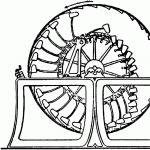The brake disc breaks when braking. What to do if the brake pedal hits when braking
One of the biggest annoyances in a car's brake system is wobble and vibration. In an emergency situation, the car may not stop in time and create a traffic accident. This is due to the fact that at the right time the driver will be afraid of extraneous vibrations and will ease the pressure on the brake pedal. Worse than this malfunction can only be a complete failure of the system. It is good if the hand (parking) brake continues to perform its functions.
The beating may be accompanied by vibration on the steering wheel, as well as on the brake pedal, as if ABS (ABS) intervenes in the process of stopping the car. You can find out if there is a runout on your car on a dry, uniform surface. It is best to do this on asphalt so that the ABS system (if any) interferes with the process as little as possible. Accelerate to a speed of 80 km / h and try to brake sharply, but without completely blocking the wheels, if you have the symptoms indicated above, then you should definitely consider repairing. If there is a lot of vibration when braking on the steering wheel, immediately release the pressure on the pedal and stop smoothly. Do not create emergency situations on the road!
What causes the brakes to hit?
The cause of beating and vibration can be: brake discs; drums; air in the lines; worn calipers and wheel hubs. In some cases, worn tires, unbalanced or crooked wheels transmit vibration to the steering wheel when braking, but as a rule, pressing the pedal passes in the normal mode. It rarely happens that the ABS system does not start working correctly, but this type of malfunction is easy to diagnose by the warning lamp on the instrument panel. Here we will not consider the complete wear of parts, since with it everything is clear enough anyway.
The car is made of metal, but as they say "nothing lasts forever under the moon." Even if you have a car long time, at the points of contact between the pads and the discs, rust and characteristic traces of corrosion appear. After a long parking at the first pressing on the brake pedal, you can already feel for yourself how the brakes begin to hit. Good luck if you have this effect over time. In the worst case, the drive will continue to deteriorate and require replacement.
Another reason for the beating may be the sudden cooling of the disk after overheating. Intensive stopping of the car at short distances (from traffic lights to traffic lights), with a dynamic driving style, does not allow the brake disc to cool properly. The brake caliper itself can also overheat the disc, which does not provide a minimum clearance between the pads and the disc when not in working condition. Upon contact with water (puddle), such a disc can simply burst, “lead” or deform. We all had bikes when we were kids. Remember how you crashed into each other on them and after that your wheel “walked like a figure eight”. In the case of a brake disc, the same thing happens, but you may not see it visually (a blue tint, as when the metal is hardened, may not appear). For a low-quality disk, only overheating (“float”, “lead”) may be enough.
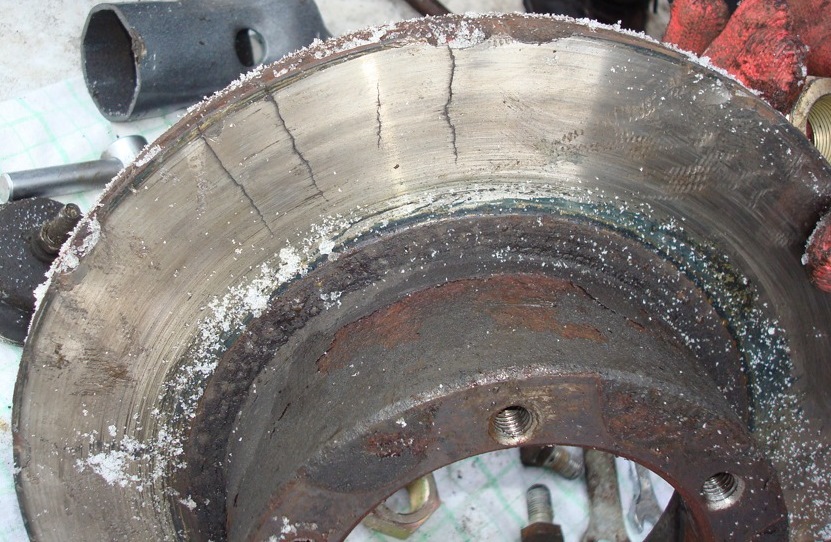
Drum brakes are less prone to deformation, but sometimes trouble happens where you don’t expect it at all. also overheat, but to a lesser extent. Imagine such a situation, you are in a hurry and forget to remove the parking brake, drive a fairly long distance without noticing that the car is not moving and, having arrived at the place, leave everything as it is, or even better, pull the handbrake again. We all know that metal tends to expand when heated, and when cooled, it narrows. In our case, the pads inside will not allow the drum to return to its original state, and we will get not a circle, but an ellipse. For safety, the braking system of a car has two parallel (axial) or diagonal circuits.
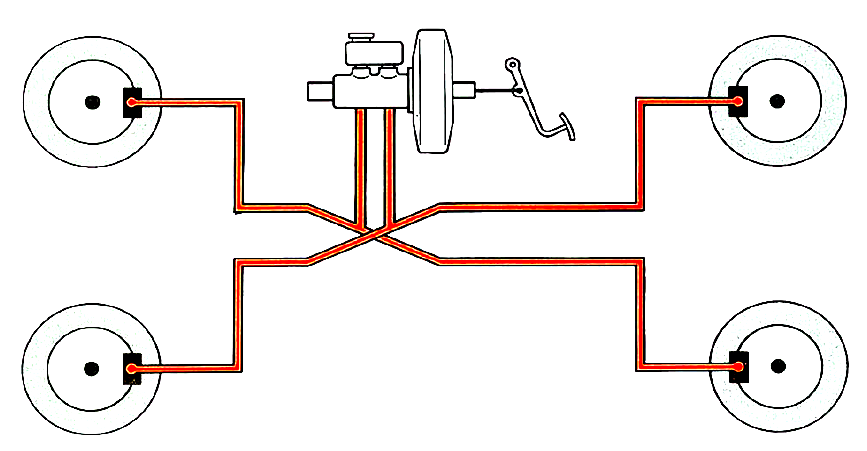
Drums today can be found on budget cars and only on the rear axle. If an axial contour is used on the car, then when the drum is deformed, you will feel only pushes of the brake pedal, and with a diagonal contour, vibration appears on the steering wheel. You can recognize a bad drum by the non-uniform gloss of the working surface.
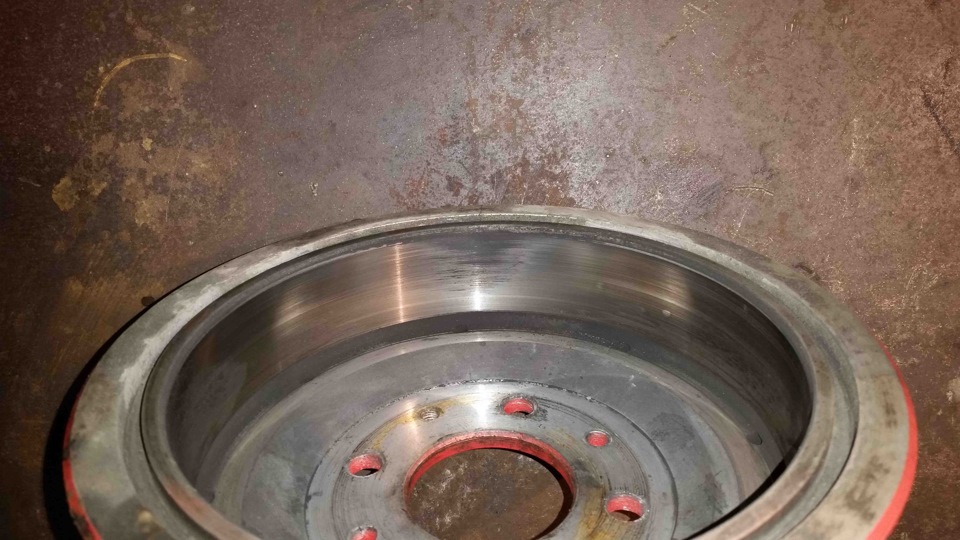
wheel hub in a rare case causes wobble or vibration when braking. Usually, the deformation of the hub occurs as a result of an accident or with a very strong impact (hit a hole), but most likely you will either tear off the wheel, or you will feel vibration on the steering wheel without braking.
Why should you not delay the repair of beat and vibration?
Everyone remembers the expression “cowards invented the brakes”? I think so, but you need to be clearly aware that with such car malfunctions, you pose a great threat to others. I hope no one needs to be reminded of the fact that serviceable brakes, the main guarantee of safety and correct tuning car, by the way, always starts with them.
Operating a car with brakes beating is fraught with great consequences for it. Thus, wheel bearings, caliper guides, brake cylinders, steering tips, rack will quickly fail, and this list may not be limited to this. The faster you fix the problem, the more money you save on its repair.
Drums and discs can be machined to return them to the desired shape, but this is an extreme measure that should be resorted to. Damaged parts should be replaced if possible. Do not save money and buy rootless spare parts. After overheating, the pads may lose their properties, and with any replacement of discs or drums, it is customary to change them along with them.
You need to approach this issue very seriously and your iron horse will not let you down in difficult times!
Personal experience
I had to deal with the problem of beating brakes on a VAZ 21099 car. The sensations are not the most pleasant. At a speed of 60 km / h. the vibration on the steering wheel was unbearable, and with increasing speed it only increased. At these moments, you just want to throw the steering wheel and let everything take its course. I replaced the front brake discs with pads, but since the old ones were already pretty worn out, vibration and bumps in the brake pedal began to appear already from 40 km / h. On the forums, I read about this problem and it got to the point that they advised me to change the hubs. At that moment, I remembered that on VAZ cars the contour brake system diagonal and it is worth looking for the reason in the drums. As a result of replacing the drums with new ones, I was amazed at the effect. When I braked from a speed of 120 km / h, the car continued to move in a straight line. There was no hint of any vibration on the steering wheel and pedal strikes. The thought flashed through my head: “can our cars really do this” ?! I passed the technical inspection without any problems, and the person who passed after me asked for the phone number of the master who did the brakes for me. At that moment, I had a smile on my face, but I did not give him my phone number.
Good luck to you and your car!
I welcome you friends to the DIY car repair site. Driving a car is always a certain risk, the level of which depends on the serviceability and correct functioning of the main systems. At the same time, the brakes remain the most important node.
The effectiveness of their work determines the overall safety of traffic. If the brake pedal hits when braking, then this should not be ignored. The consequence of such a breakdown may be a partial or complete failure of the system.
Consider the main malfunctions
To figure out why the brake pedal hits when braking and fix the problem, it is important to know the main causes of such a malfunction.
There are several of them:
1. Deformation brake discs. During operation brake discs get the most workload. They are constantly exposed to high and low temperatures.
For example, if water gets on the assembly after prolonged braking and heating of the disc, then the risk of product distortion is high. A further symptom may be the beating of the brake pedal when braking and the destruction of the disc.
The only way out is the immediate replacement of disks on wheels of one axle. Otherwise, braking performance may deteriorate due to varying pad (disc) wear.
There are situations when the beating remains even after replacement. This symptom usually goes away after a little break-in. If not, then there can be two reasons - a poor-quality part or the presence of another malfunction.
2. Brake pads on the front wheels. Often the cause of the beating can be wear, abrasion or damage to one of the main components - the pressure pads. To diagnose a malfunction, check the thickness of the products and the quality of the surface. Replace if necessary.
3. Brake pads on the rear brakes. As a rule, drum brakes are mounted on the rear wheels of the VAZ. Their disadvantages are a high risk of accumulation of dirt, moisture and dust inside the drum. As a result, brake pads can stick, wear faster, or break. The result - the brake pedal starts to beat. The way out in this situation is the same as in the previous case - complete pad replacement on one axis.
4. Brake drum. The cause of the beating can be not only the pads in the rear wheels, but also the drum itself. During operation, it can be deformed and bent. Touching the pads to such a drum will inevitably lead to vibrations, which will also be felt in the brake pedal.
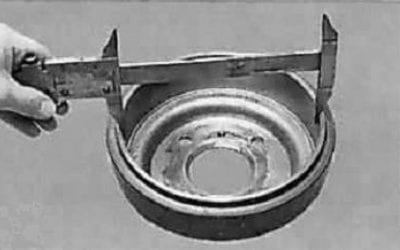
5. Brake cylinders (rear, front). Malfunction or incorrect operation (for example, freezing) of brake cylinders is one of the probable causes of beating. Sometimes the solution to the problem is possible without replacement. The best option is to use life-saving WD-40. If that doesn't help, then change brake cylinder.
There are situations when, when replacing a particular node, the problem remains. This may require further diagnosis. For example, the rear brake pad and drum can fail at the same time. As a result, their replacement should also be carried out in the complex.
Keep other important things in mind as well. If you put in a cheap and low-quality part or forgot about the need for wheel balancing, then you should not be surprised at the beating in the pedals.
Indirect reasons, what is included here
If, when you press the brake, the brake pedal hits, do not limit yourself to studying the direct causes. There are situations when failures in other mechanisms also lead to a malfunction.
Here you can highlight:
1. Wear of the hub bearings. Read how to replace wheel bearing.
2. Damage (deformation) of levers on front wheel("sabers").
3. Problems with wheel balancing. It is easy to recognize it - vibrations will be felt not only in the brake pedal, but also on the entire body of the car. Ignoring the problem is life-threatening.
Immediately go to the service station and give the wheels for balancing. If this does not help, then the only way out can be to buy a new product.
4. Broaching bolts (nuts). At the first sign of runout, check the quality of the screws. This reason is commonplace, but it is precisely because of poor-quality broach that play and beating in the brake pedal may appear. You can throw out a considerable amount for repairs, and then come across loose bolts (nuts).
How to avoid trouble?
The expectation that the problem will “resolve” itself can lead to serious problems on the road (including accidents).
To avoid problems with the brakes, do the following:
- Refill your level regularly brake fluid in a tank;
- Carry out diagnostics of the brake system for the fact of correct operation and absence of leakage.
If you cannot cope with these works on your own, then entrust this work to professionals. Be attentive to your "iron horse".
If the brake pedal starts to beat when pressed, it is better to immediately diagnose, identify and fix the problem. Otherwise, you risk many lives - your own, loved ones and other road users. Good luck on the road and of course no breakdowns.
Probably one of the most serious troubles in a car is a malfunction of the brake system. And if the brake pedal hits when braking, you need to take urgent action. Indeed, in case of emergency, the car may not respond to pressing in time, and an accident will occur. The driver may become frightened of these beats and reduce the force on the pedal. Worse than this situation can only be a complete failure of the brake system. These pedal vibrations can also be accompanied by feedback to the steering wheel. Let's figure out where these vibrations come from, what can hit the pedal, how to solve this problem.
How to check if there is brake pedal beating?
To do this, you need to go to a dry uniform surface. Of course, it is best if it is asphalt. To complete the picture, it is necessary to disable ABS. If this is not possible, then try to drive in such a way that the system practically does not interfere with the braking process.
Then they accelerate to 80 km / h. Try to brake hard without the wheels locked. If the brake pedal hits when braking, then you should think about diagnostics and repair. If there are large vibrations on the steering wheel during the process of deceleration, it is necessary to reduce the pressure on the pedal and smoothly stop the machine.
Common Causes
This system in cars has a fairly simple device. There are not many components in it that could fail and cause vibrations. However, every detail can be the source of the problem.
So, discs, drums, air entering the lines, worn calipers and hubs can cause shaking. Sometimes the cause is worn tires. Often a crooked wheel is able to transfer the beating to the steering wheel, but they will not be on the brake pedal. It rarely happens that ABS is to blame. So, with its incorrect operation, unpleasant vibrations can occur. But diagnosing a system malfunction is easy - the corresponding lamp on the instrument panel will light up. Let's look at why the brake pedal hits when braking.
Brake disk
The first and most popular reason, according to experienced motorists and service stations, is damaged or crooked brake discs. Most often they are bent due to sudden temperature changes. During intensive braking, the surface of the disc becomes very hot. 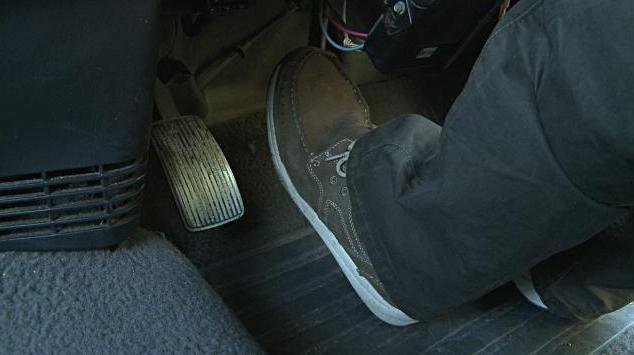 If at this moment you drive into a puddle, the metal will cool sharply. As a result, the disks are deformed. Because of this, the brake pedal hits when braking. Decide this problem a full disk replacement will help. They change on two wheels at once.
If at this moment you drive into a puddle, the metal will cool sharply. As a result, the disks are deformed. Because of this, the brake pedal hits when braking. Decide this problem a full disk replacement will help. They change on two wheels at once.
Often the problem of vibrations is observed after repair. This will pass after a certain period - new parts need time to grind.
Corrosion
Cars are still made of metal, which is known to be susceptible to corrosion. Even if the car is put in a warm garage, and it has been standing for a sufficiently long period of time, rust can form at the point of contact between the discs and the pads. 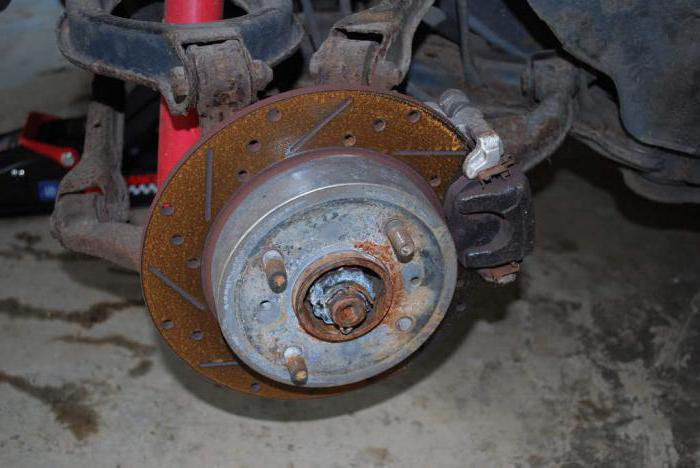 If the car is parked long enough, it is not surprising that the brake pedal hits when braking. "VAZ" and many imported cars subject to this problem. This happens quite often. This effect may disappear over time. The disc needs time until the pad wears off this layer of rust from the surface. Nothing needs to be changed or repaired.
If the car is parked long enough, it is not surprising that the brake pedal hits when braking. "VAZ" and many imported cars subject to this problem. This happens quite often. This effect may disappear over time. The disc needs time until the pad wears off this layer of rust from the surface. Nothing needs to be changed or repaired.
pads
Excessively worn pads can cause vibrations. If during braking something is not the same as before, it is necessary to check how worn out these elements are. If necessary, they are changed. It is necessary to diagnose not only the front pads, but also the rear ones. If the thickness of the pads does not meet the requirements of the vehicle manufacturer, it is recommended to replace them. Do not forget that the pads are changed in pairs, on all wheels of the same axle.
Drum
In the process of braking, not only the front, but also the rear brakes are involved. On many modern cars, they are still drum. This mechanism can also cause the brake pedal to hit when braking. The VAZ-2114 is equipped with such brakes at the rear, and there really is a problem with them. 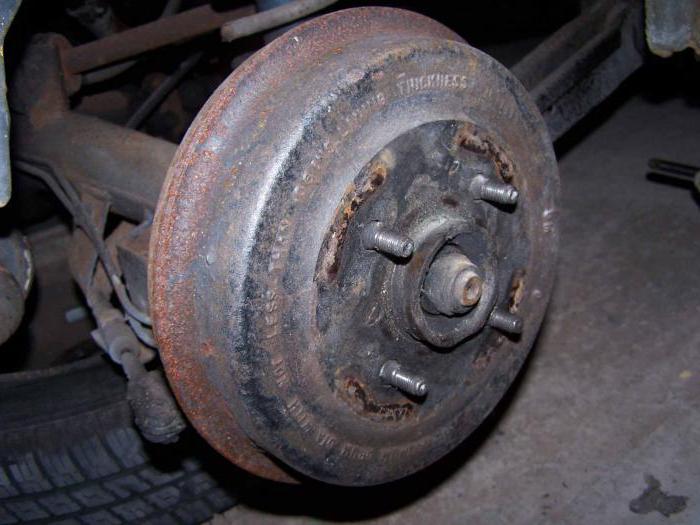 If the drum is deformed or damaged, then the brake pedal will also vibrate. Sometimes the body shakes too. Often, along with the drum, the rear pads also fail. The problem of vibrations is solved by replacing these consumables. Replacement is carried out on all two wheels of the rear axle.
If the drum is deformed or damaged, then the brake pedal will also vibrate. Sometimes the body shakes too. Often, along with the drum, the rear pads also fail. The problem of vibrations is solved by replacing these consumables. Replacement is carried out on all two wheels of the rear axle.
Brake cylinder
Sometimes they are the reason. If these elements have deformations, then this also leads to the fact that the brake pedal hits when braking. Experts recommend carefully inspecting the parts for damage and distortion. If all cylinders are intact, then it is recommended to lubricate them in order to completely eliminate hang-ups and a wedge.
The braking system is working, but there are vibrations
If, after checking all the elements of the system, no serious damage or defects could be identified, then the problem may be hidden in non-obvious reasons. So, it could be:
- wheel imbalance;
- deformation of suspension arms;
- hub bearing.
Also, the reason may be a weak fastening of body elements and parts of the brake system. The car traveled on bad roads, and as a result, the brake pedal hits when braking. "Niva" is especially prone to these troubles. Perhaps somewhere a few bolts are not tightened, and the beating is felt on the pedal.
Balancing violation
Often, neither a tire nor a rim is perfect, both in terms of shape and geometry. Since the weight in different parts is different, then during the rotation of the wheel, the place where the mass is greater will pull the central part of the wheel along with it. This is how centrifugal force works. If the wheel is spinning fast and the car is driving at high speed, then this force will turn into vibrations. This is the reason when the brake pedal and steering wheel hit when braking. 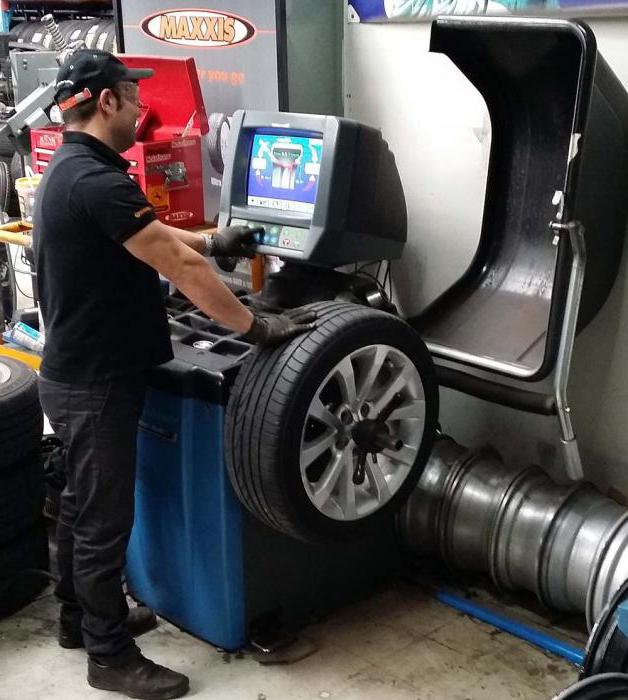 Wheels need to be balanced periodically. This procedure is especially relevant if they have been replaced wheel disks and tires. Balancing is the alignment of the mass of a car wheel at each point. Special weights are fixed on the reverse side.
Wheels need to be balanced periodically. This procedure is especially relevant if they have been replaced wheel disks and tires. Balancing is the alignment of the mass of a car wheel at each point. Special weights are fixed on the reverse side.
If you ride on such wheels for a long time, then the tire will wear out unevenly, and this will lead to even greater vibrations. It also causes increased wear on the suspension of cars. The wheel bearing suffers the most from this.
The main symptom of disturbed balancing is vibrations on the steering wheel. To diagnose this, the wheels are carefully inspected. If they are even, and the car did not drive through the pits, then the problem lies precisely in the imbalance. 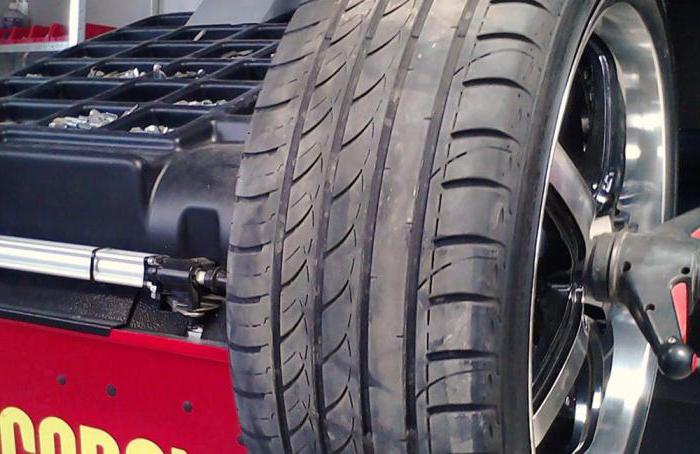 Do not think that it is enough to give one or two wheels for tire fitting and the problem will be solved. If you balance, then all four. Two will make no sense.
Do not think that it is enough to give one or two wheels for tire fitting and the problem will be solved. If you balance, then all four. Two will make no sense.
Deformed tires or rims
The cause of various vibrations can be crooked wheels. This is easy to identify on a balancing stand. More often the wheel is deformed when it hits a large hole. You can determine the curved disk yourself. It is enough to visually inspect the wheel. Stamped discs are more prone to deformation.
A badly worn tire is also a common cause of brake pedal slap when braking. The VAZ-2110 has a reliable design, but sometimes the cause of the vibrations must be looked for here, and not to change the discs and pads. The cord on the tire may be damaged, due to which part of it will be convex. 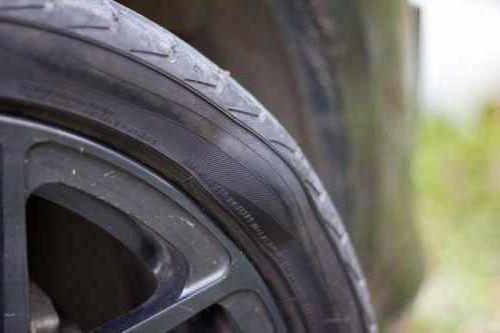 Sometimes tires are just defective. The symptoms will be simple - this is vibration on the brake pedal, on the steering wheel and throughout the body. The beat will increase as the car accelerates. However, for the most part it depends on the degree of deformation of the wheel. With severe damage, beats will be felt even at low speeds.
Sometimes tires are just defective. The symptoms will be simple - this is vibration on the brake pedal, on the steering wheel and throughout the body. The beat will increase as the car accelerates. However, for the most part it depends on the degree of deformation of the wheel. With severe damage, beats will be felt even at low speeds.
It is impossible to solve the problem without changing the wheels. Most often they have to be changed, especially when the damage is serious. There is an option to ride with them after balancing. However, vibrations will disappear for a very long time until the tread becomes uniform on one side and the other.
No need to tighten with the elimination of vibrations
Using a car with these symptoms is fraught with dire consequences. Due to vibrations, hub bearings, guides in calipers, and brake cylinders wear out quickly. Over time, you will have to change the steering rack and tips. And this is not the whole list.
Brake discs and drums can be machined. This will help them get back in shape. But you need to remember that this is an extreme measure. If the disc thickness is minimal (less than 20 millimeters), only replacement will help. Otherwise, they will overheat even more. Don't skimp on parts. If the brake pad overheats, it is not a fact that it will not lose its properties. But often for this reason the brake pedal hits when braking. "Priora" is equipped with an anti-lock braking system "ABS", and many owners say that the pedal beats precisely through the fault of the electronics. But it is better to check once again and identify defective parts.
Conclusion
So, we found out for what reasons vibration on the pedals can occur when speed is reduced. It is better to approach the brake system and its serviceability with all responsibility. Brakes are primarily the safety of the driver and passengers, as well as all other road users.
In any car, it is the brakes that are a key element in the safety of its operation. If the brake pedal hits during braking, then this is clearly a bad sign, which means the need for a complete inspection of the car.
When pressing the brake pedal is accompanied by its further beating, you should carry out a full inspection as soon as possible by contacting a quality car service, or do it on your own. Generally, the higher the speed, the stronger the beat effect. Very often it is transmitted to the steering wheel and the body itself in the form of an unpleasant vibration, which is hard not to notice. If it is more characteristic of the body than the braking system itself, then the problem may not be in the latter.
One of the most common causes of this problem is broken brake discs, which become so due to damage and curvature. This is simply due to the critical temperature difference that occurs after instantaneous heating and rapid subsequent cooling, which is why the brake disc is deformed. In this case, if the pedal starts to beat, it is necessary to immediately replace both brake discs in order to avoid accidents.
However, even their quality replacements may still have a beating beat. Most often it is felt in the first five hundred kilometers, and the reason for this is a sudden deterioration specifications the entire system. The solution is the so-called "breaking in" of the disks, but if it did not help, then a thorough diagnostics, perhaps, can help determine what, in fact, is the problem. 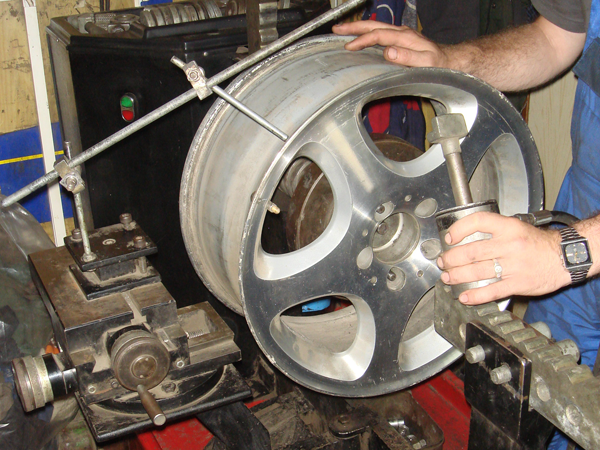
When the brake is faulty, the reason for this very often can be its brake pads. This problem is also treated quite simply - it is necessary to replace the pads and the pedal will function normally.
The same problem may appear due to a kind of "sticking" of the rear brake pads. Unfortunately, if you use the brake very often and sharply at high speeds, these pads wear out quite quickly and even crumble. Again, the way out of this situation is to replace them immediately.
The fourth direct reason that the pedal does not function normally is a serious deformation of the rear brake drum. It is because of its “launched” state that the braking system begins to beat during its use.
The last most common breakdown is considered both rear and front. They are very often subject to souring, which contributes to the fact that the brake becomes faulty. In this case, their replacement is optional, since the use of WD-40 can solve this problem. 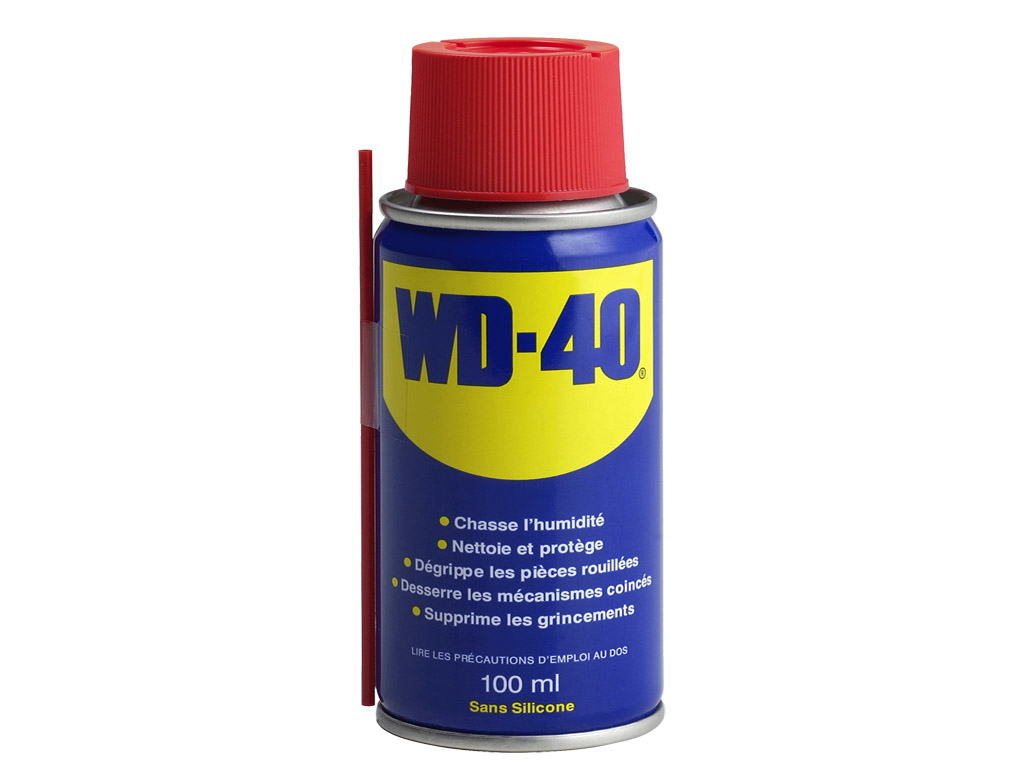 WD-40 is a specialty water repellent that got its name from the fact that it was developed in the 40th attempt. This tool is able to prevent corrosion without much difficulty, but if it does not help, then replacing the cylinders is also indispensable. If the application of the above solutions did not help, then the problem may be a malfunction of the automatic transmission or in other details.
WD-40 is a specialty water repellent that got its name from the fact that it was developed in the 40th attempt. This tool is able to prevent corrosion without much difficulty, but if it does not help, then replacing the cylinders is also indispensable. If the application of the above solutions did not help, then the problem may be a malfunction of the automatic transmission or in other details.
Indirect causes and their elimination
In the event that the brake pedal continues to beat even after all direct faults have been resolved, then the matter may be different.
Other causes of brake failure include excessive wear on wheel bearings. Their replacement should solve this unpleasant situation. Also, the problem can be fueled by the "saber" and "chamomile" being in poor operational condition.
If the wheels are out of balance, the pedal can also start to beat, but then most of the unpleasant effect is transferred to the car body, rather than to the brake system itself. This issue is also extremely simple to solve - at best, wheel balancing will be required, and at worst, their replacement. Also corny, not fully tightened nuts and bolts become the cause of backlash, which at high speeds imitates a characteristic beating, due to which the driver may consider that it is the brake that is faulty.
However, when the brake pedal starts to beat, it means that it is best to immediately use the services of a trusted car service. All because of what exists great amount the reasons for the occurrence of such a malfunction, and if you do not turn to professionals in time, the brake system may completely fail after thoughtless intervention in its work.
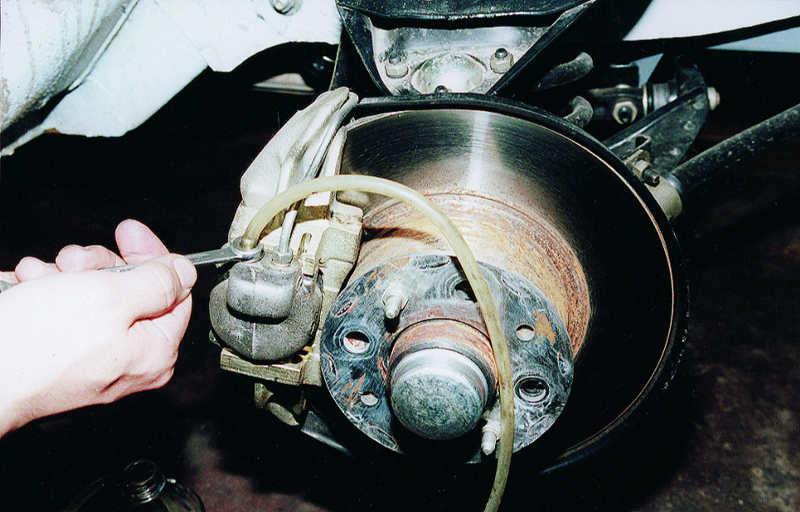 First of all, to avoid possible faults, it is necessary to regularly check the presence of brake fluid in the corresponding system of the car, and also replenish its amount if necessary. pledge durable operation of any car is proper care of it and compliance with all safety rules. As for the brake system, the malfunctions in it are not used to “resolving”, therefore, a serious and responsible approach is needed here to solve the current problem.
First of all, to avoid possible faults, it is necessary to regularly check the presence of brake fluid in the corresponding system of the car, and also replenish its amount if necessary. pledge durable operation of any car is proper care of it and compliance with all safety rules. As for the brake system, the malfunctions in it are not used to “resolving”, therefore, a serious and responsible approach is needed here to solve the current problem.
Video "Eliminating the runout of the brake disc on the motor wheel"
The recording shows how the process of eliminating the runout of the brake disc on the motor wheel takes place.
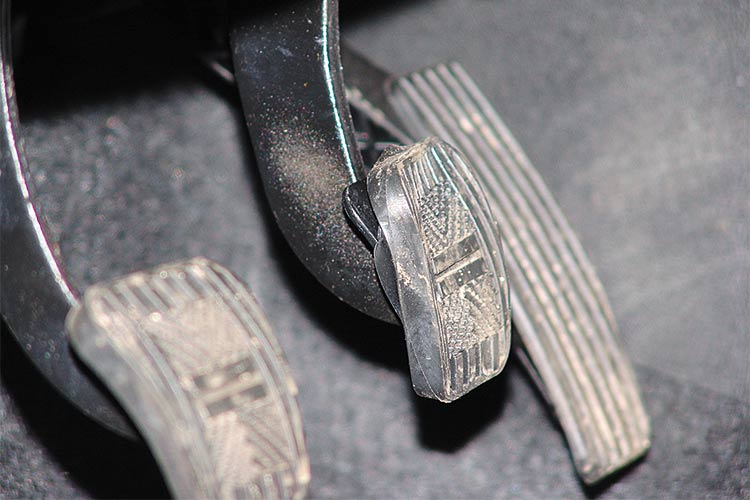 Why does the brake pedal fail and what to do in this case?
Why does the brake pedal fail and what to do in this case?
No matter how well the active and passive safety of the car is developed, if the brake pedal hits during braking, the car becomes dangerous for both the driver and other participants. traffic. At the same time, the higher the speed, the usually stronger the vibration of the pedal, which can be an unpleasant surprise in an emergency. Let's see why this might happen.
Article author: mudriy_lev
Specialization: repair of autogenerators and servo drives in the car.
Place of work: service center. Experience: 2 years.
Education: higher - electrical engineer, secondary special - mechanical assembly work mechanic.
The car vibrates along with the beating of the brake pedal
The situation when the car, when driving or when braking, vibrates quite strongly simultaneously with the brake pedal, may be for the following reasons:
- car wheel imbalance
- damage to the wheel (tire or disc)
- poor wheel alignment
To diagnose wheel imbalance, you need to visit a service station. In garage conditions, despite the existing methods, it is quite laborious to check the balancing, and the result obtained with self-balancing will be with a large error.
If the wheels of the car are unbalanced, this situation must be corrected. After that, check the behavior of the brake pedal when braking at various speeds. For these purposes, it is better to choose a road without heavy traffic.
In order to identify a damaged wheel, it is necessary to visually inspect all 4 wheels. It is desirable to produce this operation on the pit in order to be able to carefully inspect the wheel both from the outside and from the inside. Any swelling, depressions should arouse suspicion, and in this case the tire must be repaired or replaced with a new one. The same goes for wheels. They shouldn't have any damage. It is desirable that there are no stuck pieces of dirt on the wheel.
Brake pedal wobble due to a loose wheel is the most dangerous. When braking, large forces act on the wheel mounts to break away. This can lead to stripped bolts and loss of the wheel, which is fraught with the creation of an emergency at speed. It is necessary to visually inspect all fasteners more often and, in case of loss of bolts or their loosening, take measures to eliminate the current situation.
Wheel alignment
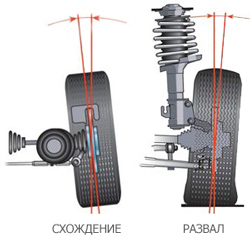
Incorrect wheel alignment can also create vibration that passes from the wheel to the entire body of the car. When braking, the pedal directly receives a beat that is transmitted to it through the entire brake system.
When diagnosing the reason why the brake pedal hits when braking, the factors indicating the need to check the wheel alignment are the following previous events:
- the car was in an accident, after which body repairs were carried out
- the suspension was repaired or vice versa, the suspension was not repaired for a long time
- the car received a blow to the wheels as a result of falling into a pit, quickly overcoming a speed bump, unsuccessful parking with a blow to the curb.
The alignment angle must be adjusted only on a fully serviceable suspension, the elements of which have not yet fully worked out the resource.
Brake system of forward wheels
![]()
In order to determine the culprit of the brake pedal beating of the front wheel brake system, two complementary methods are used:
- Analysis of steering behavior during braking
- Handbrake
If, during braking, the beating is transmitted to the brake pedal and steering wheel at the same time and with the same frequency, then most likely there is a problem with the brake mechanism of the front wheels.
An indirect confirmation of this is the absence of a beating of the steering wheel when braking with a handbrake. In this case, a small vibration can be transmitted to the car body.
The causes of pedal beating, in this case, may be:
- wave-like curvature of the brake disc as a result of a sharp temperature difference
- uneven rusting of the brake disc
- use of poor quality brake pads
- brake disc chip
- excessive brake disc wear
- souring brake cylinders
After a visual inspection of the brake mechanisms, it is necessary to replace the failed elements.
Brake system of rear wheels
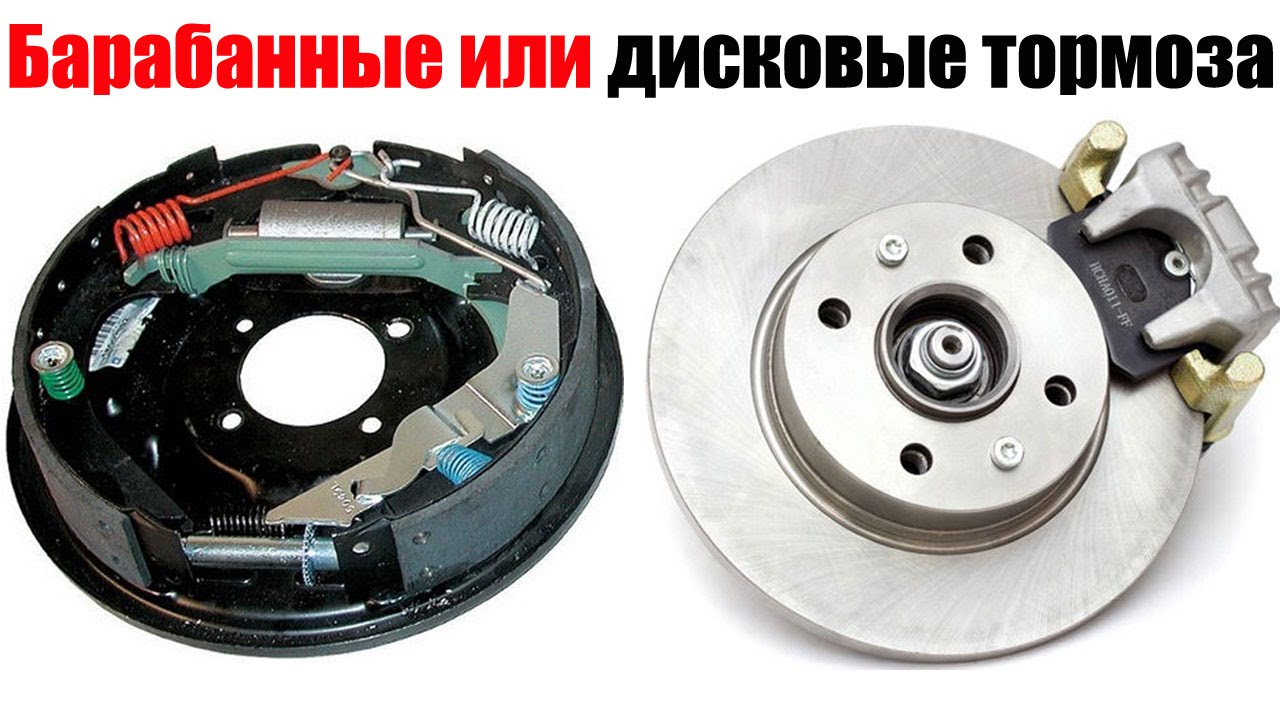
When diagnosing brake pedal beating, attention should be paid to the brake system of the rear wheels if there is no steering wheel beating during braking and vibrations are felt when braking with a hand brake.
Rear brake mechanisms on modern cars are of 2 types:
- drum
- disk
In the case of drum brakes, the cause of the brake pedal beating is the distortion of the drum when it assumes an elliptical shape. To eliminate this malfunction, it is necessary to replace the damaged elements of the brake system.
In the case of the rear wheel disc brakes, the methods for diagnosing and repairing the breakdown are similar to the front wheel disc brakes.
Brake pedal beats after installing new parts
If the brake system has recently been repaired, the most possible reasons is an:
- poor-quality installation
- low-quality spare parts
- combination of the above two factors
In this case, the right decision would be to visit another service station.
It is strictly forbidden to drive a car at high speed if the brake pedal hits when braking. And if the vibration is very strong, then it is advisable to call a tow truck and not risk your life.





